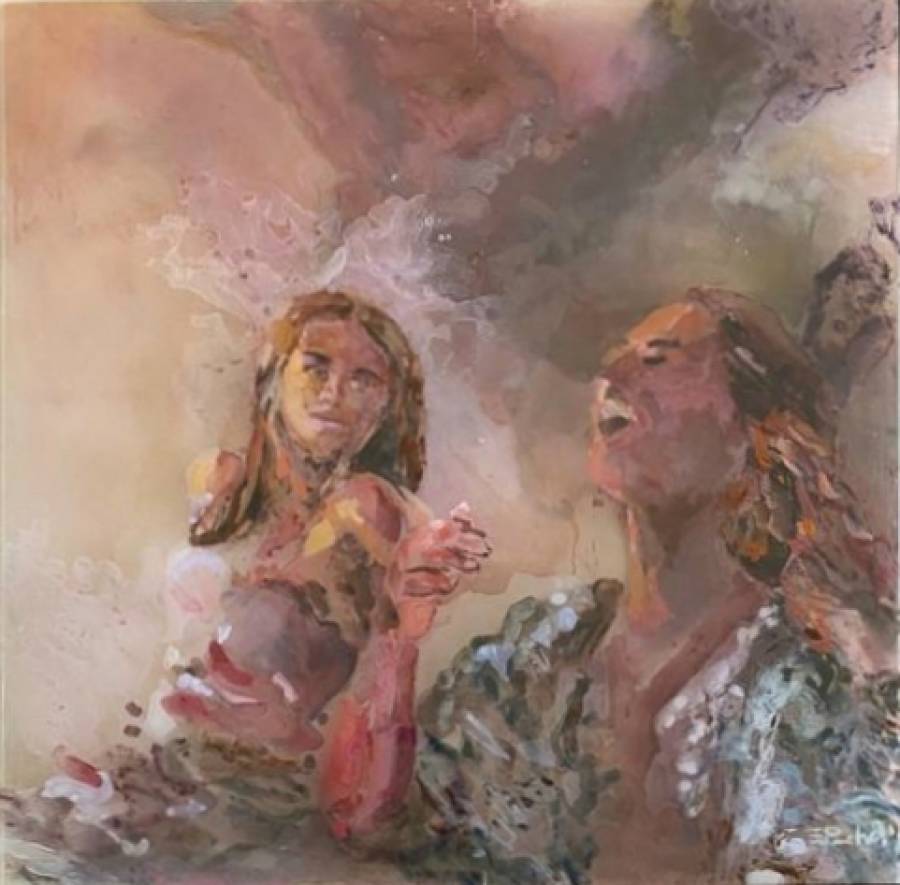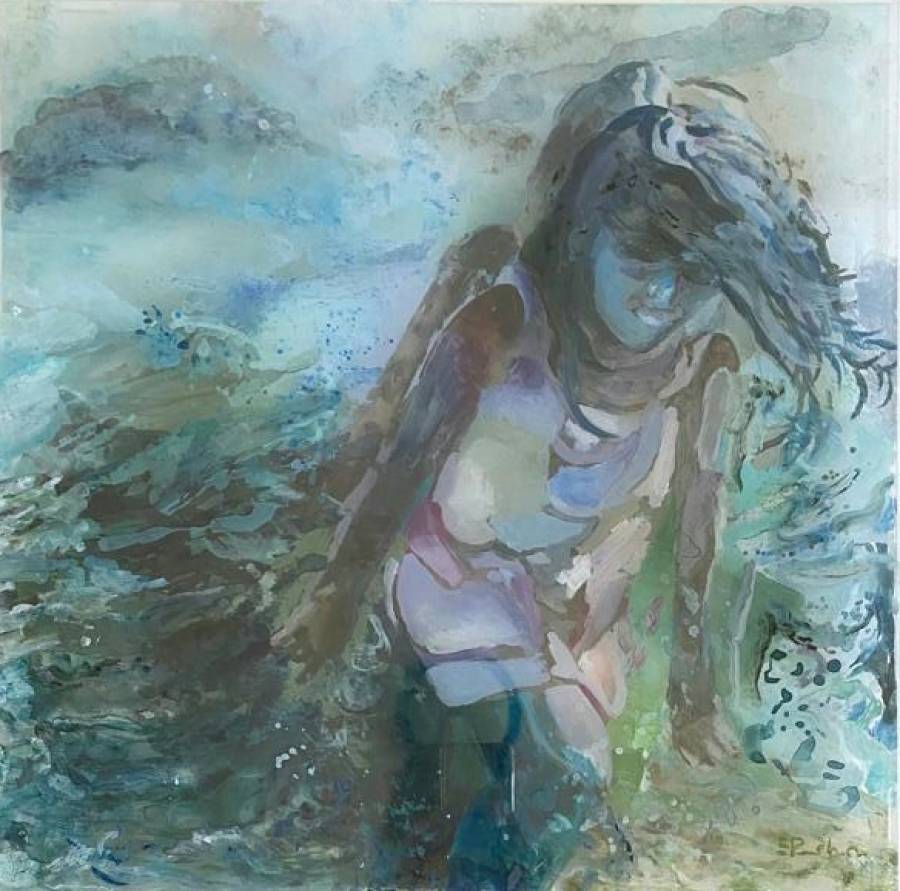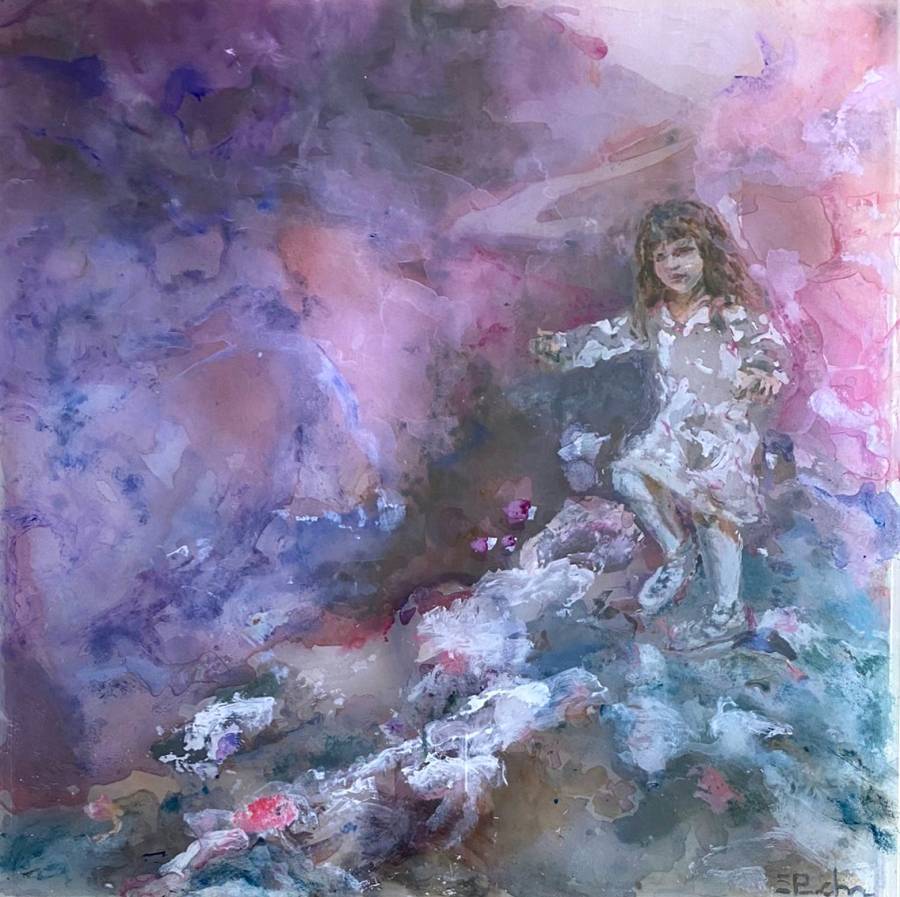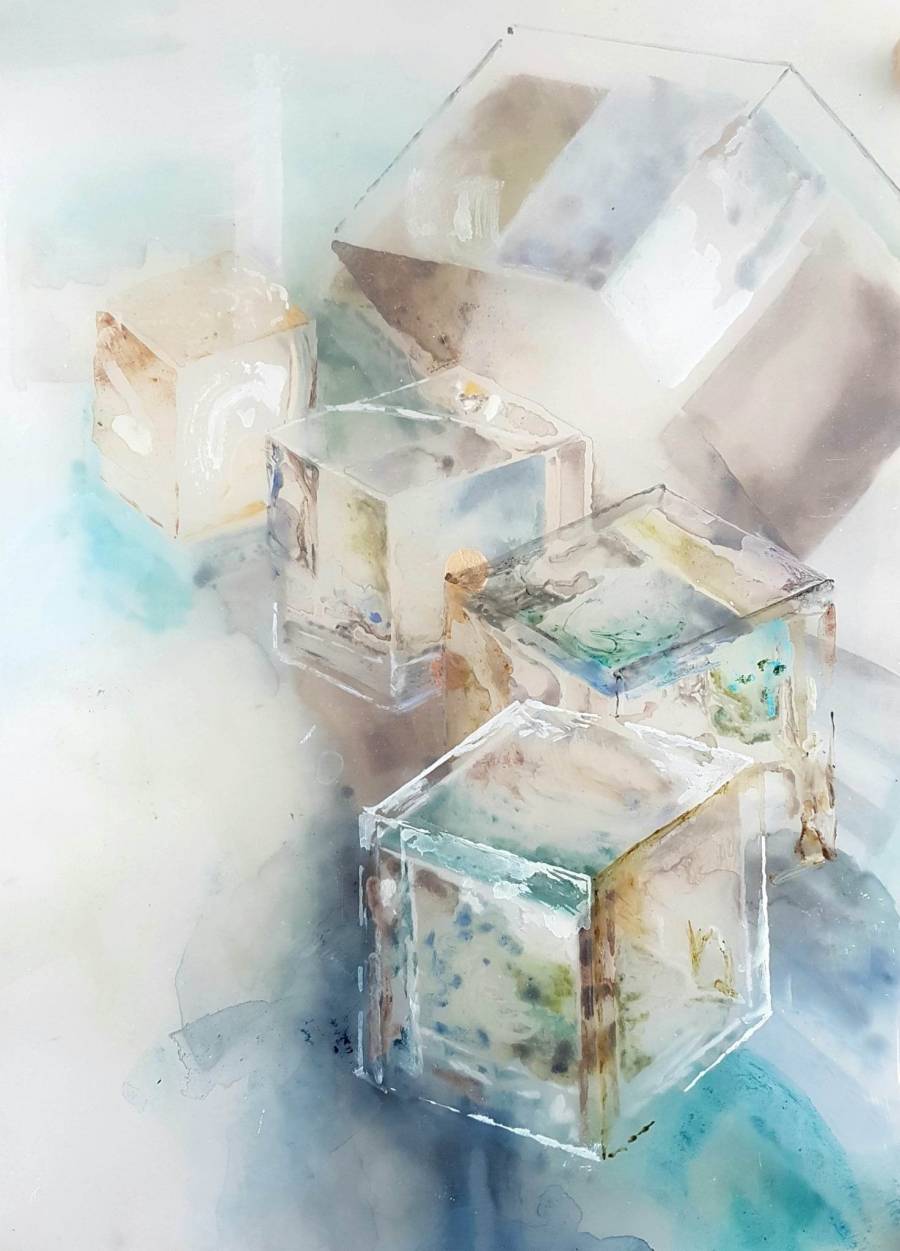Evelyne Puech explores reverse glass painting. This technique was widely used for sacral paintings until the Renaissance. It also corroborates the content and meaning of the work of the painter who likes to think upside down, to see things from the other side. It promotes the mobility of her mind.
Evelyne Puech's approach constitutes both a movement towards authenticity and an awareness of the irreversible. The accuracy of the gesture takes precedence since what is painted once cannot be touched up again. By leaving an imprint, that of the initial trace, the artist has personally reappropriated this technique with a contemporary support replacing glass by alternating vaporous textures to intensify the material.
Evelyne Puech's approach constitutes both a movement towards authenticity and an awareness of the irreversible. The accuracy of the gesture takes precedence since what is painted once cannot be touched up again. By leaving an imprint, that of the initial trace, the artist has personally reappropriated this technique with a contemporary support replacing glass by alternating vaporous textures to intensify the material.
Evelyne Puech offers in all of her work a symbolic connotation, a universe of transparence and materials, a present including a past through subjects that each person can cross. Her works are generally made up of three or four plexiglas spaced out in order to bring a third dimension, which strongly distinguishes her art.











